Pioneer in Norwegian Landscape Architecture
Olav L. Moen (1887-1951) made the most important contribution to the development of the academic discipline of landscape architecture in Norway in the first half of the 20th century. He was originally educated as a master gardener and after several years of practice and further education in both Germany and Denmark, he finished at Norwegian College of Agricultural (NLH, current NMBU) with a degree in horticulture in 1918. From 1918-20 Moen taught at State Gardener School (Statens Gartnerskole) in Kristiania (current Oslo). Olav L. Moen then took a degree in “garden art” under the guidance of the garden architect Willy Lange in Berlin and returned to NLH to become a docent in 1921. In 1938, he was appointed as a professor. Moen was principle of the programme until his death in 1951 (Jørgensen 2011).
Moen was inspired by the Neoclassicism of the time. He advocated the use of remedies from Renaissance and Baroque in modern landscape architecture, and despised the romantic forms of landscape style. Later, Moen was influenced by the ideas of functionalism, however, his aesthetic ideals remain classical (Blichner 1989).
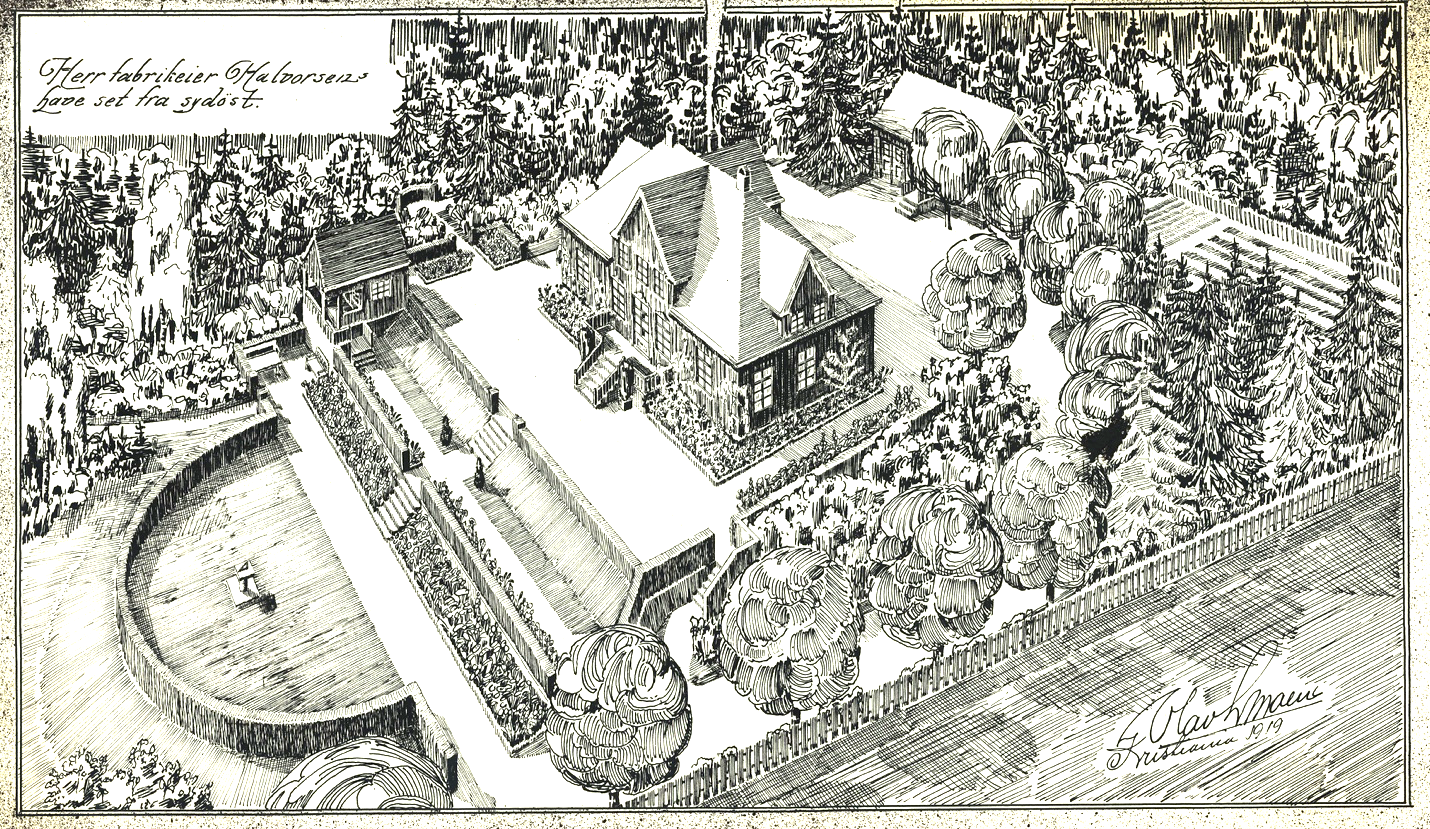
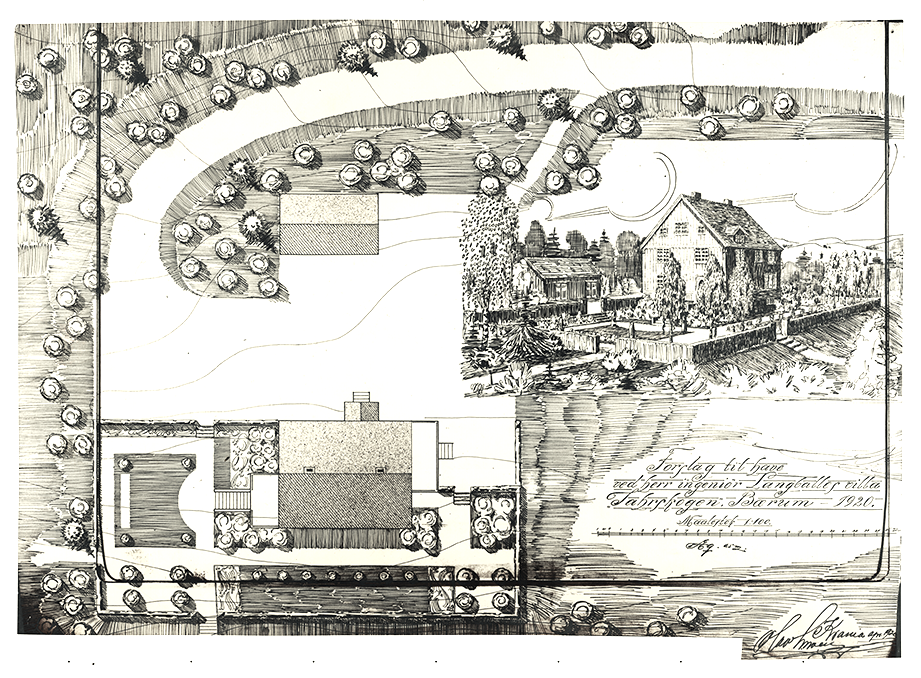
The collection of Olav Moen starts with villa gardens from 1919. Moen did not only draw maps, but made also perspectives, sections and drawings of details. In 1920, Moen planned the private villa garden of engineer Brynjulf Langballe (1874-1949) near Lysaker. Langballe, building inspector (Bygningsinspektør) of the landowner Harald Løvenskiold, was since 1919 responsible for the regulation and parsing of Jar and Røa vest of Oslo. The early villa gardens of Moen show a penchant for symmetry that is less important in his later plans (Blichner 1989).
Moens major design project is the campus park at Ås from 1924. He has now started as a docent at NLH and headed the new established programme of garden art. From this time, the collection contains beautiful maps and sketches from the campus park at Ås.
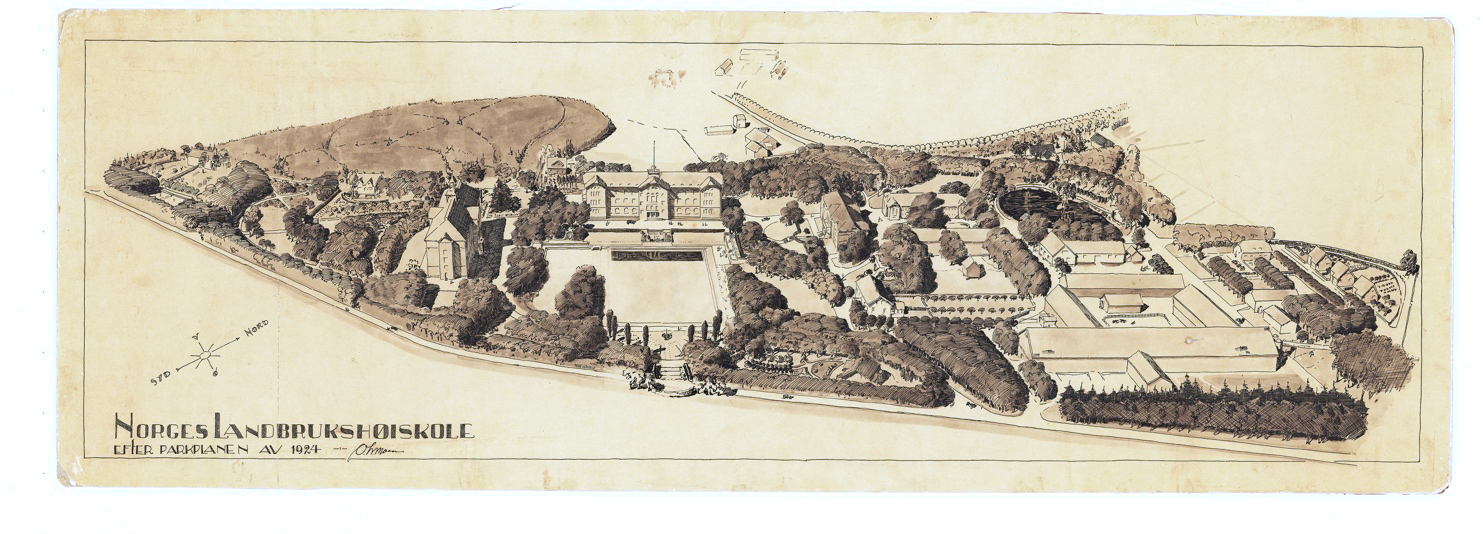
The design is essentially classical, responding to the architecture of the main building on campus, but there are also functionalist parts like the sports grounds for the Student Foundation at the University (Storebrann idrettsplass) from 1936 and realized in 1946 (Jørgensen 2011).
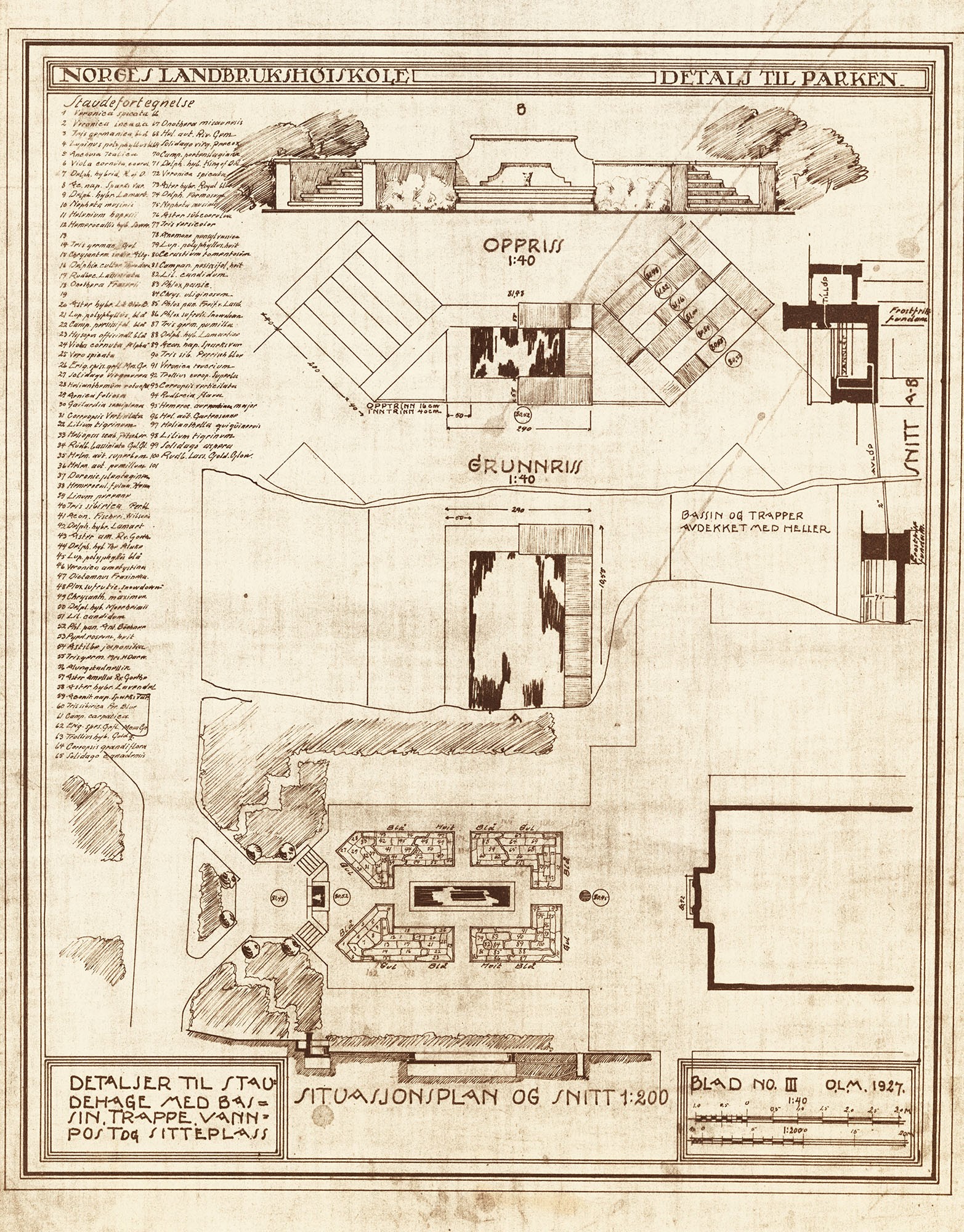
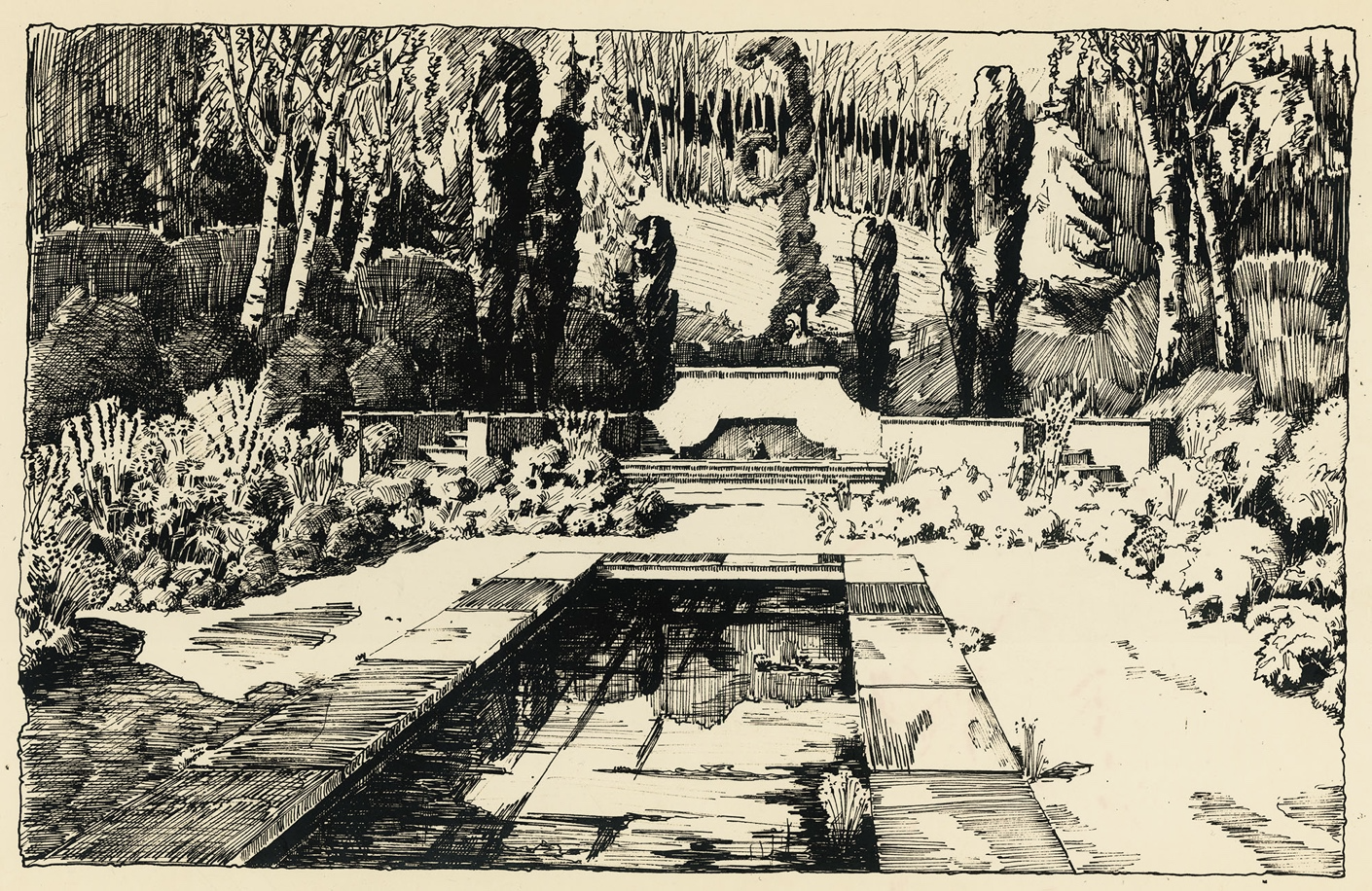
From around 1930, Moen got more and more involved in park plans for hospitals, public institutions, cemeteries and parks for companies. He planned the park around the new established Norwegian Radium Hospital (Det norske radiumhospital) northwest of Oslo (maps from 1931) in addition to several parks for tuberculosis hospitals.
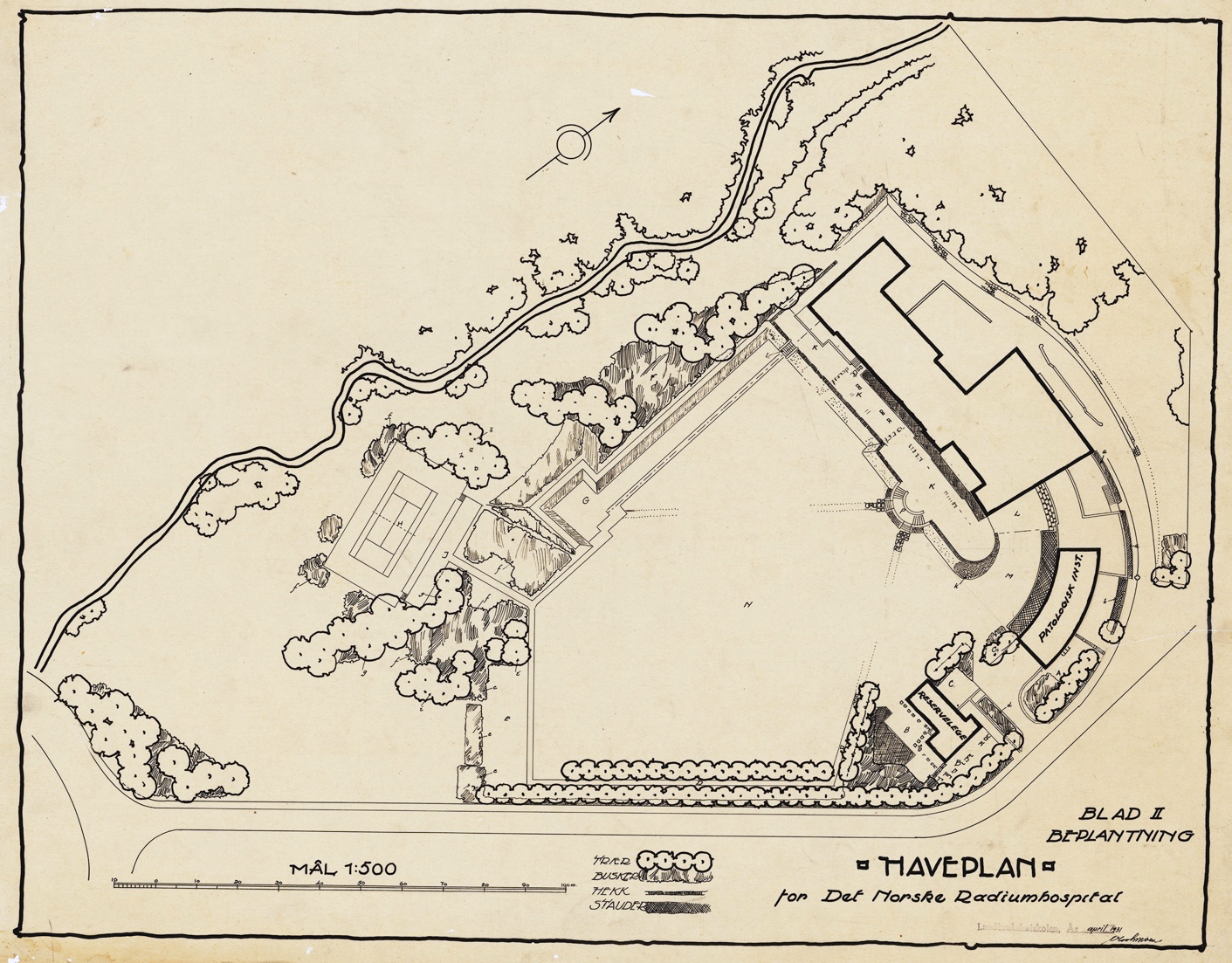
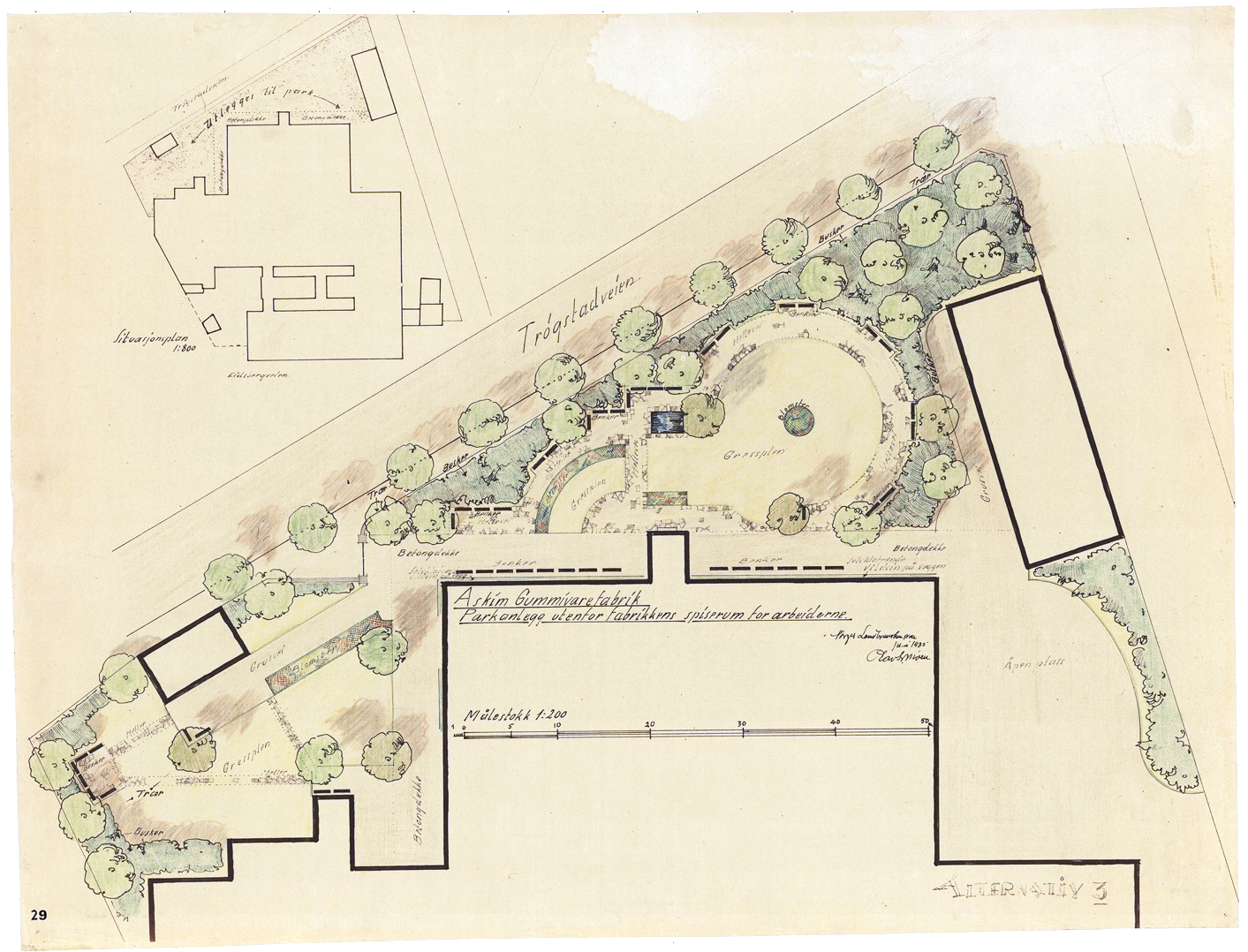

In 1932, Moen was deeply involved in the debate about the Gustav Vigeland Park in the 1930ies. Vigelands’ design met criticism from a variety of sources, including from the Chief City Gardener of Kristiania (current Oslo), Marius Røhne, but an adaptation of the design was built in the end, despite the criticism (Jørgensen 2011).
From the late 1930s, the collection shows Moen’s involvement in public park plans especially in combination with sports- and playgrounds. From now on, he also was involved in projects outside the Oslo region. The park plan with sports- and playground in Harstad is preserved as well as his proposals for the competition of the new established “Svenskebyen” in Namsos. Together with dendrologist, Oddvin Reisæter (1913-83) Moen won both the first and second prizes in 1941.

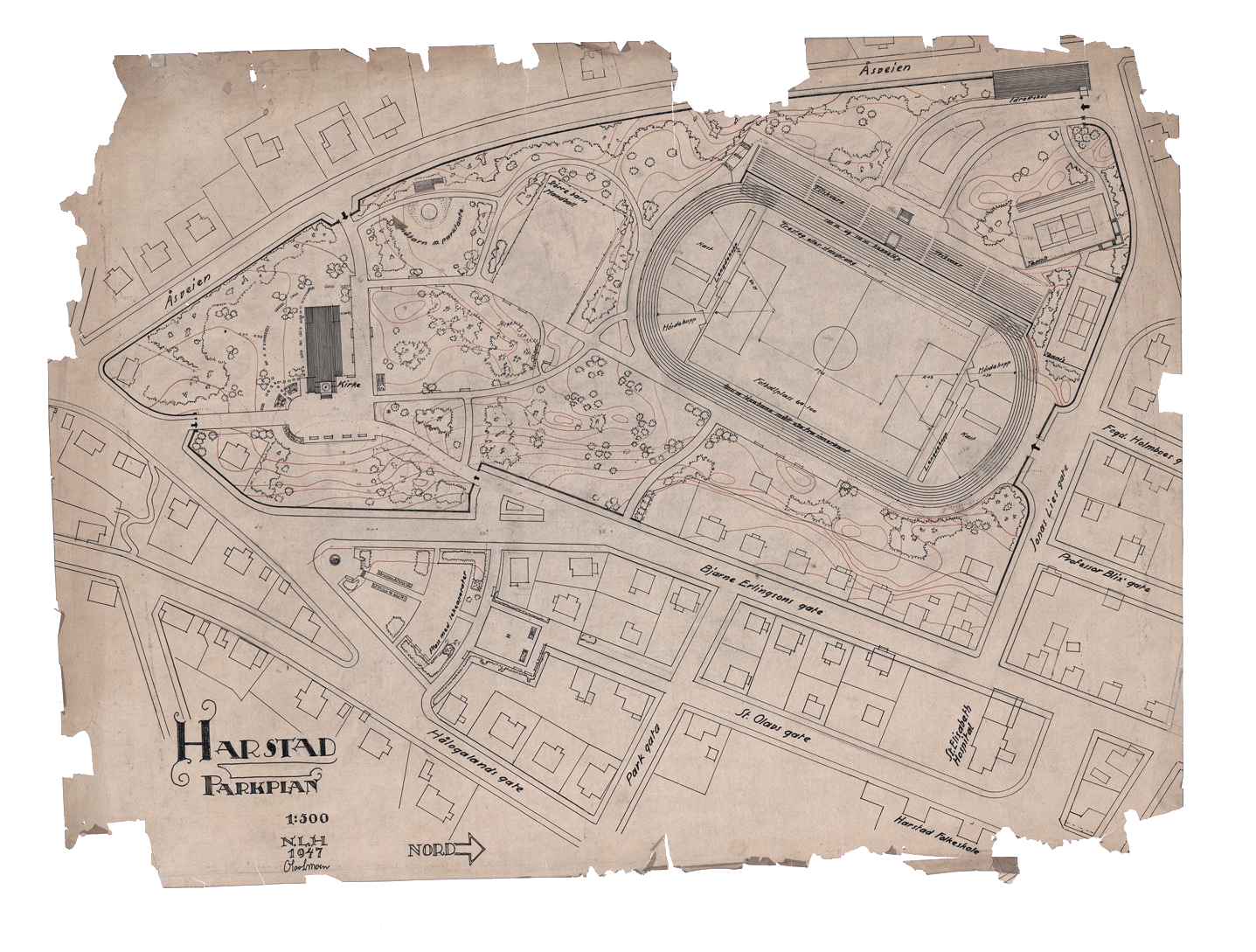
In 1937, Moen won the competition “Good farm gardens” (Gode bondehager) in all three categories: larger, average and small farms. These proposals show again the same strong geometry as he has used in the compositions from the 1920s (Blichner 1989).
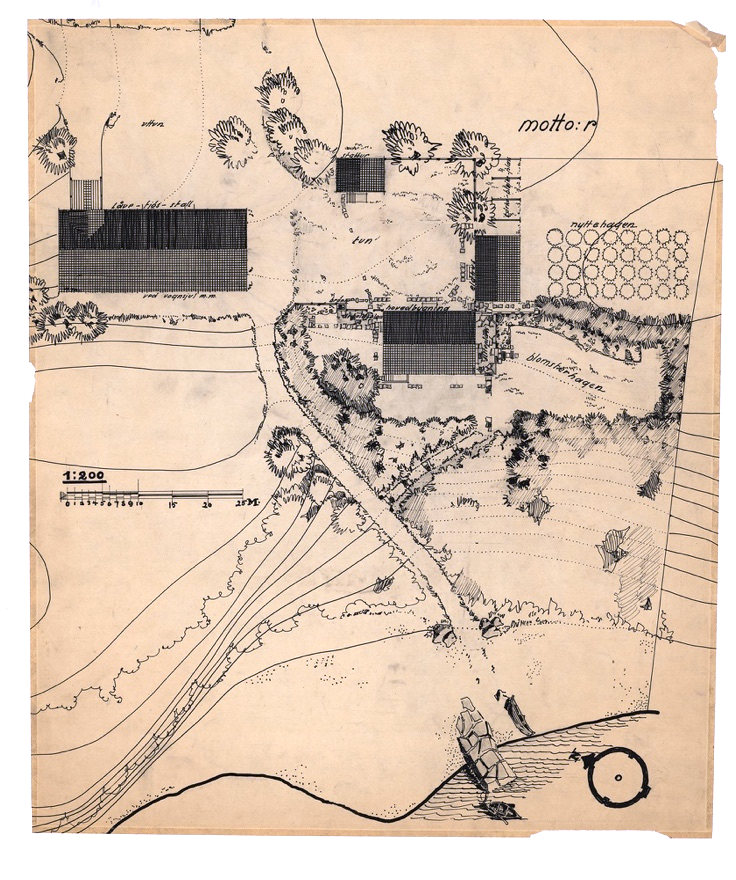
The preserved maps of Olav Leif Moen are now digitalised, and a list of available projects can be found here: Collection Olav Moen_inprogress.
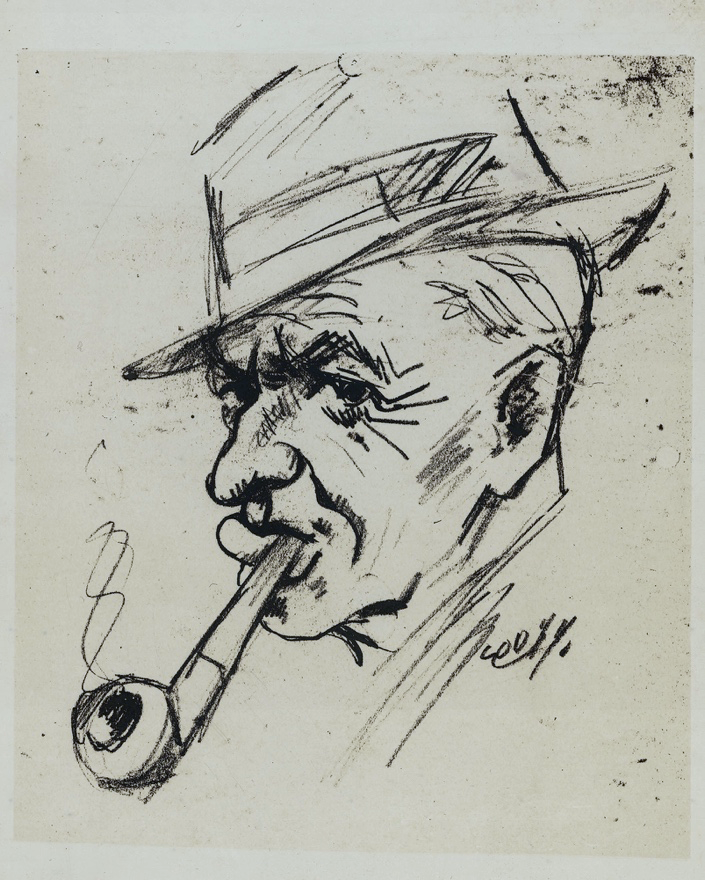
More literature:
T. Andersen (red.): Norske hagebruksfunksjonærer og hagebrukskandidater, Fredrikstad 1936.
B.C. Blichner: “Olav Leif Moen (1887-1951) en landskapsarkitekt i brytningen mellom nyklassisisme og funksjonalisme”. Hovedoppgave 1989. Institutt for Landskapsarkitektur, Norges Landbrukshøgskole.
M. Bruun: “Professor Olav L. Moen – en pioner i norsk hagekunst”, i Utemiljønr. 1/1982, p. 9–12.
E. Hildrum: “Professor Olav L. Moen død”, in Havekunst, no. 1, København 1951, s. 2–4
K. Jørgensen: “Olav L. Moen og nyklassisismen i norsk landskapsarkitektur”, i Byggekunstnr. 3/1988, p. 170–177.
K. Jørgensen: “Landscape architecture in Norway: a playful adaptation to a sturdy nature”. Web, www.researchgate.net [April 2011].
O. Reisæter: “Olav Leif Moen – læraren og mannen”, forelesning ved åpning av utstilling av Moens arbeider, NLH 7.12.1981.

Permalink
Great! Hope to know more about Norwegian landscape design and history.
Permalink
Permalink